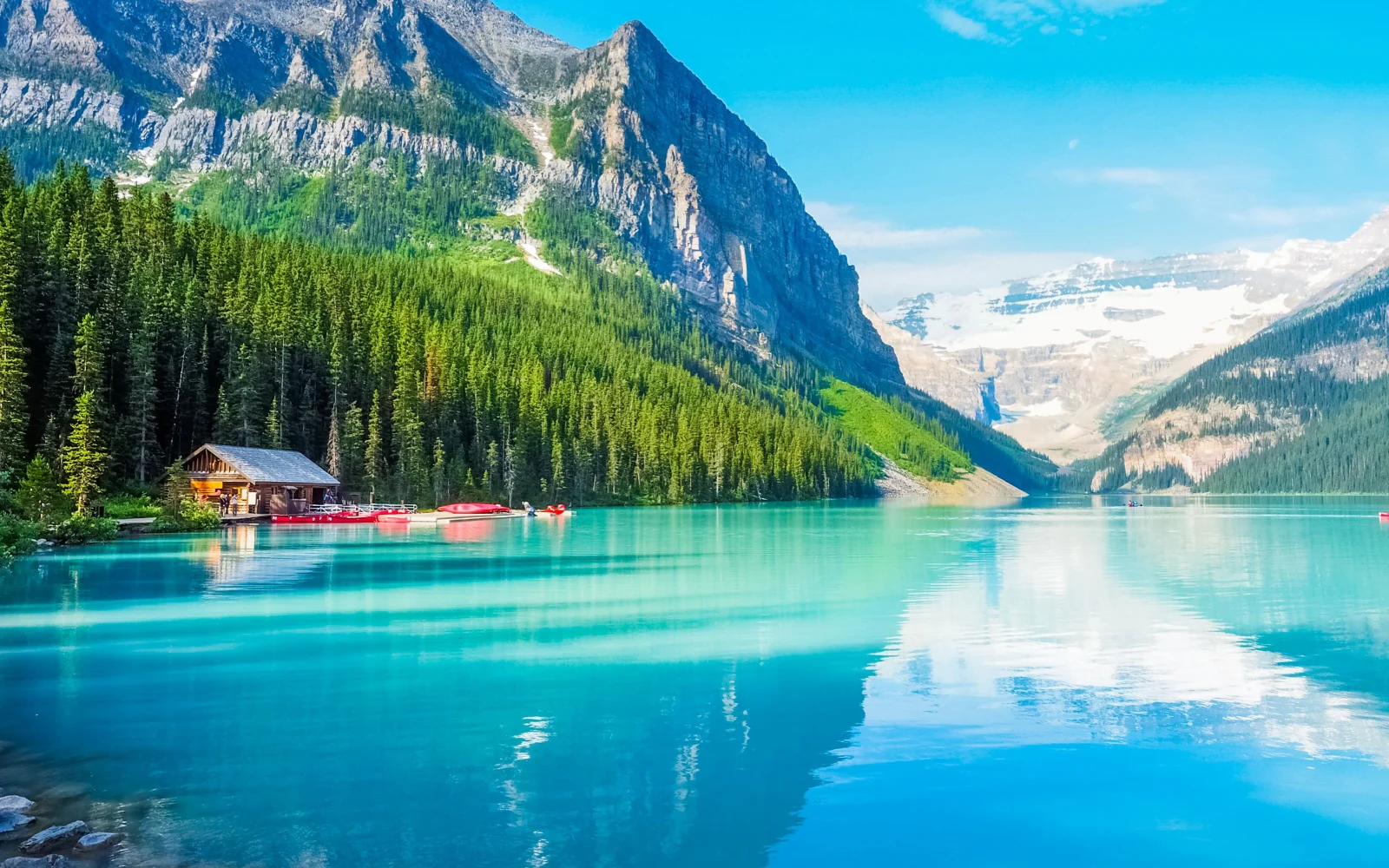What's the best time to visit Banff National Park?
The best time to visit Banff National Park is in summer (June-August) when warm weather attracts hikers, nature lovers, and canoeists. During this time, you’ll enjoy guided tours and summer events like the Banff Yoga Festival in June and the Banff Marathon, Canada Day celebrations in early July.
But it comes with a price; be prepared for higher prices and limited parking due to the influx of visitors during this busy season, with temperatures ranging from 41°F to 75°F.
With more than four million visitors each year, it seems no one can stay immune to Banff National Park’s beauty. Be it the mesmerizing lakes surrounding the park, or the mountain landscapes, Canada’s first national park always meets its visitors’ expectations.
That being said, the season you decide to pay the park a visit might make or break your stay, so knowing the best time to visit Banff National Park is a must.
As always, we have your back. We have all the necessary information, not just about the best time to visit the park, but additional travel tips to ensure you have a fantastic stay.
The Best Time to Visit Banff National Park
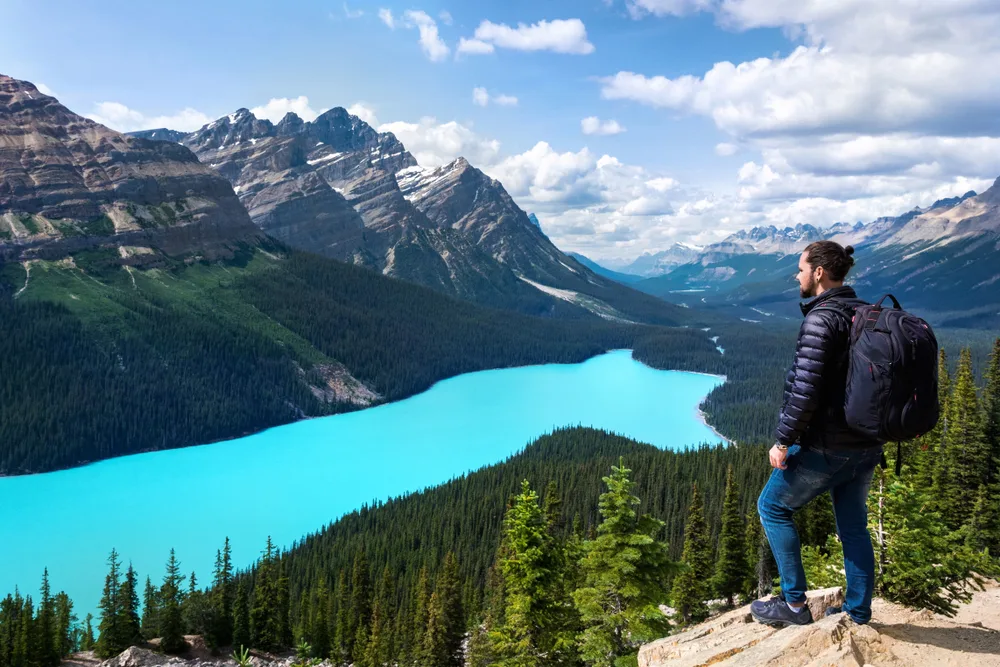
R.M. Nunes/Shutterstock
The overall best time to visit Banff National Park is in summer (June—August). It’s arguably the busiest time of the year, with visitors flocking to the park to take advantage of the warm weather.
During this time, hikers hit the trails, nature lovers enjoy the greenery, canoeists explore The Bow River, and night owls gather around campfires. Also, guided tours abound at this time, so there’s plenty to do and see and keep you busy during your stay in Banff.
Those who wish to mingle with others and add a bit of socializing to their itinerary should check out some of the popular events during summertime, such as the Banff Yoga Festival (June), featuring all things yoga-related, plus self-care, meditations, green cuisine, and outdoor activities.
If you’re looking for something more dynamic, keep your eyes peeled for the Banff Marathon (June), where you can run through plenty of stunning landscapes as you pass by the Vermillion Lakes and the majestic Bow Valley Parkway.
If you’re visiting at the beginning of July, join the Canada Day celebrations — expect a downtown parade, plenty of live performances, and a central market with many vendors.
Finally, note that prices around this time go over the roof, and parking can be challenging thanks to the large influx of visitors. If you go to Banff National Park in the summer, expect average temperatures between 41°F and 75°F.
Cheapest Time to Visit Banff National Park
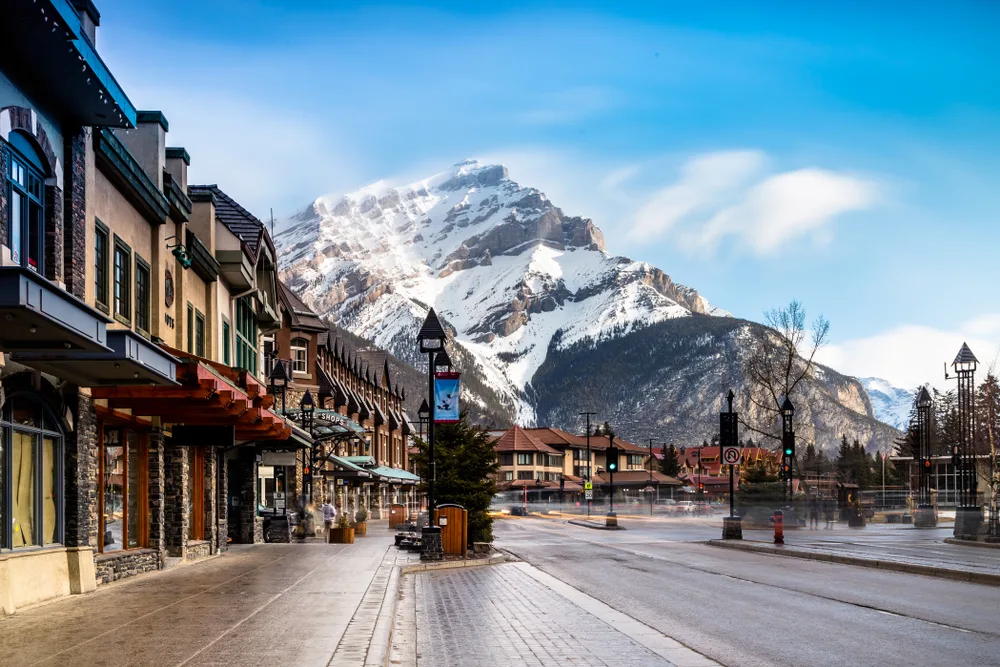
Aqnus Febriyant/Shutterstock
The cheapest time to pay Banff National Park a visit is in spring (March—May). These months provide visitors with the best accommodation deals, resort offers, and airfare prices. Spring months in Banff see average lows of 14°F and 61°F.
That said, when it comes to actually entering the park, note that there are fixed fees that apply all throughout the year.
You may opt for a daily pass ($10.50 for adults, $9 for seniors, and $21 for a group/family) or go with the Parks Canada Discovery Pass, $72.25 for adults, $61.75, and $145.25 for families/groups.
Youth aged 17 or under can visit the park for free. To go easy on your wallet during your stay, you may also want to look for discounts or a wide range of offers, such as riding the Banff Gondola and getting your kid(s) on it for free if you go before 10 am.
If you visit around this time, remember that spring is somewhat of a limbo period in Banff — summer and winter see way more activities take place. There are also fewer tours and reduced hours at businesses.
However, The Columbia Icefield begins welcoming guests in mid-April, and the Columbia Icefield Skywalk opens in May, and these are activities worth putting on your agenda.
Also, spring has plenty of wildlife viewing opportunities, especially bears in late spring (tip: early mornings and late evenings are when you stand the biggest chance to see them).
In terms of festivals, here’s what you can expect if you visit in spring: March opens with The Arc’Teryx Canmore Ice Climbing Festival, inviting climbers to test their skills at various levels.
There’s also the Lake Louise Junior Big Mountain Challenge, with free skiers competing against one another and attempting to impress the judges.
April wraps up with the beginning of Banff Summer Arts Festival, which runs through September, celebrating various artists and uniting music enthusiasts by honoring a wide range of genres. Those up for a good run should join the Banff to Calgary Road Race (May).
Being a fundraising event, you’ll not only do a good thing for your body, but also contribute to a good cause. May hosts the Slush Cup too —- skiers and snowboarders go down the hill to plunge themselves into slushy water.
Least Busy Time to Visit Banff National Park
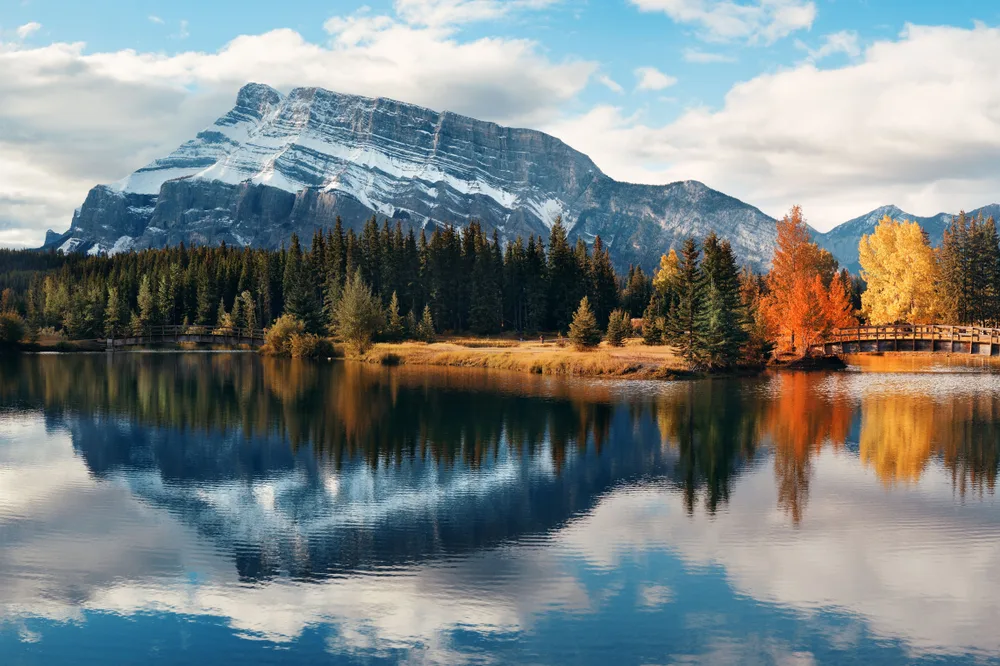
Songquan Deng/Shutterstock
The least busy time to head to Banff National Park is in the fall (September—November). These three months see average temperatures between 18°F and 64°F.
Although the weather’s crisp, the fewer crowds and a large number of fun fall events compensate for it. The fall foliage is an added bonus; spotting wildlife is quite frequent around this time as well, and golf courses are said to provide discounts.
If you happen to visit in September and/or October, you’re in for a treat, as it’s the larch season. Specific to Alberta and the northern US, the alpine larch is a delicious coniferous tree one only gets to see around this time.
When it comes to the events worth being on your cultural radar, consider the following ones: the Banff Mountain Film & Book Festival (October-November), including authors sharing their stories, or filmmakers displaying their films, music, exhibitions, campfire nights, discussions, and so much more.
There’s also Taste for Adventure (October-November), for those ready to treat their taste buds to the flavors of Banff National Park, and Banff Craft Beer Festival (November), an annual event, considered “the world’s most beautiful beer festival,” as visitors enjoy not only tasty local beers but also stunning views.
Late November sees the beginning of the ski season and the opening of the Banff Christmas Market.
Finally, if you can’t make it to Banff National Park in the fall yet you want to avoid the crowds, don’t come around major holidays. These periods tend to be the busiest — Labor Day, Victoria Day, Civic Holiday, Remembrance Day, and Family Day.
Worst Time to Visit Banff National Park
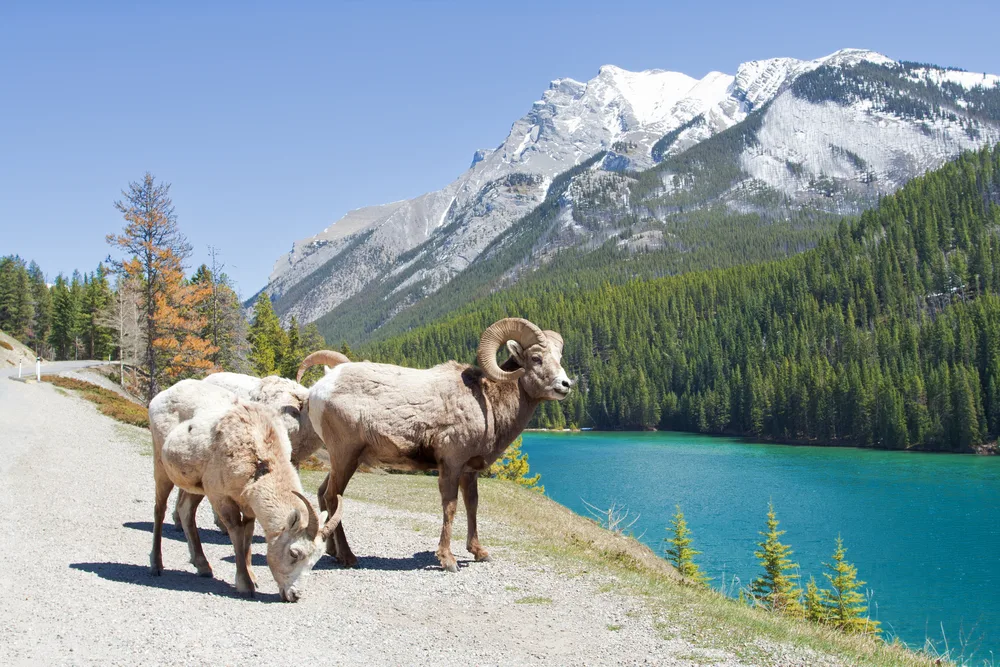
Natalai Pushchina/Shutterstock
The worst time to visit Banff National Park is in winter (December—February). Winters here see temperatures hovering around 28°F during the day, and 3°F at night.
It’s hands down the coldest time of the year, and unless you’re into winter sports, you’ll regret deciding to pay Banff National Park a visit, as that’s the main focus around this time.
With that being said, even if you’re not into skiing or snowboarding, there are still ways to enjoy Banff by attending some of the holiday festivals, checking out the Christmas Market and buying souvenirs, or simply marveling at the snowy landscape.
January visitors should take note of the SnowDays Festival — get ready to witness the streets of downtown Banff turn into galleries with huge snow sculptures.
Yet another winter-themed festival, the Ice Magic Festival (January) held on Lake Louise every year draws in visitors from around the entire continent. Visitors get to enjoy an ice castle, ice bars, and ice sculptures to be found in the majestic Fairmont Chateau.
If you visit during the holiday break, consider booking your stay in advance, as accommodation is scarce and prices skyrocket. Also, snowstorms cause plane delays and frozen roads cause issues for vehicles, so factor this in when deciding when you should head to Banff National Park.
Also, if you’re planning to see major points of interest such as the Columbia Icefield or Moraine Lake, note the roads leading there are off limits due to avalanche risk. Train tours are also limited around this time.
The verdict? If winter sports aren’t your thing, don’t bother coming to Banff National Park in winter, as you won’t get to enjoy the park the way you could potentially if you visit in any other season throughout the year.
Frequently Asked Questions
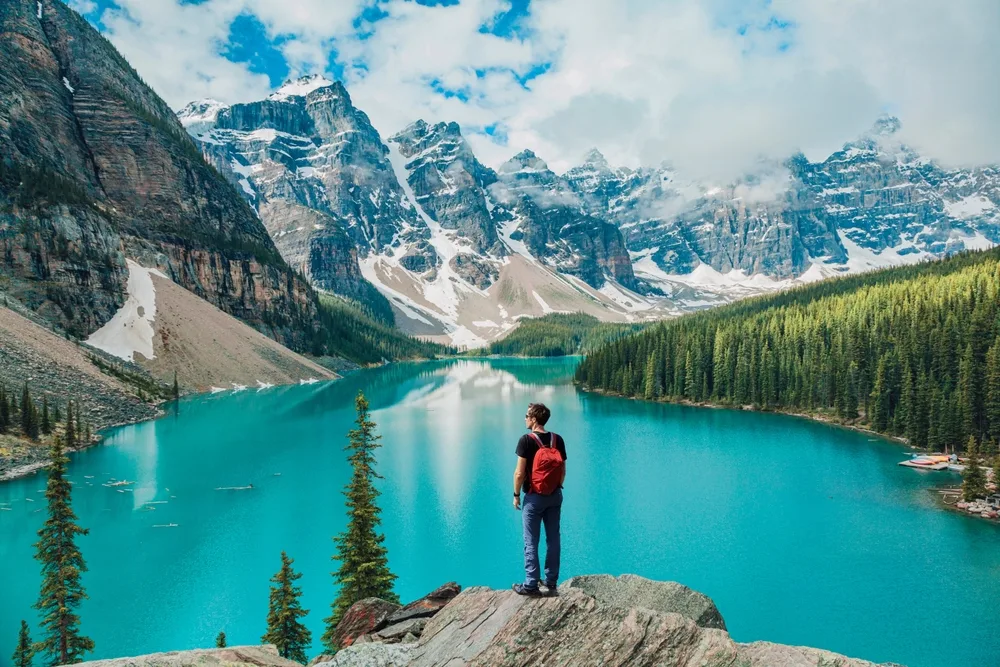
Maridav/Shutterstock
Here are some frequently asked questions about visiting the park:
How many days do you need in Banff National Park?
How many days you need to plan for Banff National Park depends on what you wish to do once you’re there, and of course, your budget. You’ll need at least two days to explore the park and see the surrounding area.
If possible, it’ll be ideal if you can spend five days — that way, you not only get to explore Banff and Lake Louise, but you’ll also have time to engage in recreational activities such as hiking and canoeing during summer, or skiing and snowboarding in winter.
Is Banff expensive to visit?
To spend three days in Banff, you’ll need $1,130 if you’re going solo, $1930 if you’re with a partner, and $2,465 if you’re going as a family of four. Hotel prices vary between $285 and $710 (on average, $355 per night). It’s recommended that you budget around $150 per day per person for eating out and transportation.
Last but not least, keep in mind that your Banff expenses depend on your country of origin, the accommodation you pick, and how you spend your budget during your stay. Plus, the budget data we’ve just provided is based on other travelers’ budgets, which means it’s only an estimate.
Why is Banff so famous?
A few things make Banff so famous — its surrounding lakes, majestic mountains, and the fact that it’s the country’s first national park of this kind. Also, it’s the world’s third national park refuge, and belongs to the Canadian Rocky Mountain Parks UNESCO World Heritage Site.
What are the best months to see the northern lights in Banff?
Seeing the Northern Lights is possible within the September—May period, with February—April being the prime time to see them.
How far apart are Lake Louise and Banff?
Lake Louise is 38 miles from the Tower of Banff. Driving takes around 45 minutes if you opt for TransCanada, but if you pick the Bow Valley Parkway, you’ll need an hour.
So, What’s the Best Time to Visit Banff?
| 👍 Best Time to Visit | June to August |
| 💲 Cheapest Time to Visit | March to May |
| 🗓️ Least Busy Time to Visit | September to November |
| 👎 Worst Time to Visit | December to February |
All in all, whether you wish to enjoy the fall foliage in Banff National Park, join the summer crowds, take advantage of the more affordable hotel rates, or enjoy the winter snow, your visit is bound to be memorable.
Being a year-round destination, Banff National Park offers something exciting each month — it’s up to you to choose what floats your boat the most and enjoy it to the maximum.



